Barbaris is a word familiar to many since childhood. Most it is associated with a delicious caramel, carbonated water or jam. All these treats are made from the Barbaris berries of the same name, whose shrub is not only nutritional value, but also decorative.
With her bright appearance, Barbaris attracts views, allows you to decorate any plot without problems. The cultivation of this shrub, in turn, will not cause absolutely no problems at the gardeners. After all, this culture is distinguished by unpretentiousness and good endurance to various climatic conditions.
In this article, we will consider the features and a detailed description of such a bright plant as Barbaris, as well as we describe the most popular types and varieties. More expanded about the most basic nuances of agrotechnology growing.
Features and description of the bright shrub of Barbaris
Barbaris is a leaf fall or evergreen shrub or a small tree, which refers to the Barberry family. The genus of barberrys or Berberis today has about 170 species, including a large number of decorative representatives. This culture is unique in that almost all of its parts are used in various areas of human life. Berries - the main ingredient for sweets, the leaves are various healing chambers, roots - decoctions from pneumonia, heat, cough.
In the garden sites, Barbaris is most often grown for their decorative properties: bright foliage, fiery-red borders of berries, compact shape of the bush. But some fans of this plant are planted due to useful properties, for these purposes, one kind of barbaris - Barbaris ordinary is suitable for these purposes.
This culture was known in the ancient Babylon, where people also revealed Barbaris for his healing properties. The area of \u200b\u200bthe habitat of this unusual shrub today is considered to be the Northern Hemisphere, namely the Highful Territories of Eurasia, North America and Africa.
Barbaris description:
- Barbaris grows most often in the shape of shrubs, less often in the form of trees. It is distinguished among the variety of species of this culture deciduous and evergreen shrubs.
- The average height is approximately 0.5 m to 3 m, it all depends on the specific type of barbaris.
- Barbaris bushes are formed by the sprinkling shoots of reddish-brown, which also gives it decorative.
- A distinctive feature of this culture is the presence of sharp spikes, so you need to handle the barbaris very carefully.
- The spikes are formed from grain or modified leaves.
- Barberry leaves in the sinuses of bargains grow in the form of beams, as they are attached to very short shoots.
- The form of leaves are oblong, lanceathoid. May be simple or leathery. In the summer, they are bright green, and by the fall, Barbaris changes his painting on a reddish, yellow, orange or purple-purple.
- On shoots, the leaves most often are located next to the spirals.
- Barbaris blooms with bright yellow, white or orange flowers, which have a very pleasant aroma, capable of attracting different insects.
- The form of flowers are small, collected in inflorescences, are less likely solitary.
- Barbaris flowering begins in the late spring.
- The fruits of culture can be different in shape and color, it all depends on the specific type and variety. We are familiar to the oblong shape and red color of Barbaris ordinary berries.
- Barbaris shrub is unpretentious to the place of growth and climatic conditions. Therefore, it is great for growing even in an urban feature.
Popular views and varieties of Barbaris
To date, there are more than 170 species of Barbaris, many of whom are cultivated by people. Therefore, if you decide to plant a bright barkaris bush on your site, you must decide what you want to get in the end: decorative garden decoration or delicious berries. Read more consider the most popular varieties of this unique plant in Russia, as well as their varieties.
Barbaris ordinary
Barbaris ordinary is perhaps the most common type of this decorative plant in our territory. This culture also grows in natural conditions throughout Europe and Asia.
- It is a leaf falling shrub that can be in height to reach 3 meters.
- The form of Barbarisa ordinary attach to the reprehensive shoots of grayish color, on which spikes are located up to 2 cm long.
- The leaves are oblong, in shape resemble ellipses. The top of the sheet has a dark green color, and the bottom - with a gray-shade.
- This barbaris blooms with bright yellow flowers of small size, which are assembled into busy inflorescences up to 6 cm long.
- After flowering on the bushes there are oblong fruits of bright red, although there are varieties with white and yellow fruits. Sometimes one berry can reach 1-1.5 cm. These berries can be eaten.
- Barberry ordinary is a very unpretentious plant and can grow on any soils and in any terrain.
Popular varieties of barbaris ordinary:
- Barberry atropurpurea. This is one of the most popular varieties of Berberis vulgaris. He has a rather tall, can reach 2.5 meters. Berberis atropurpurea is very handsome leaves shade - purple-purple, which effectively looks any portion in the landscape.
- Alba Variegates. Very bright and decorative bushes of barberry, which is characterized by green leaves with a white border around the edge.
- Aurea-marginata. Also ornamental shape which has a bright green foliage with gold border on the edge.
berberis thunbergii
This type of barberry is considered one of the most beautiful. Berberis thunbergii is a decorative plant that its appearance will enhance any plot.
- This shrub can be attributed to low-growing plants, barberry reaches a height of 0.5-1 m. But in spite of this, perfectly suited for use in landscape design.
- The bush is formed of erect branching shoots bright color from red to purplish-brown.
- This type of barberry is also famous for its thorns, but they are much smaller than that of Berberis vulgaris, 1 cm in length.
- All shoots are covered with small oblong leaves, which reach a length of 3 cm. In the summer they are dark green in color, and in the fall Berberis thunbergii is painted in bright red hues.
- Bloom begins in the late spring of small yellow flowers, gathered in inflorescences. On the outside of the petals painted red.
- After flowering, the fruit on the bushes appear bright red in color and oblong. The berries are very hardy and can hang on the branches even in the winter, are a favorite food for birds.
Popular varieties of Berberis thunbergii:
- Aurea. Barberry with bright golden leaves. The height can be up to 1.5 m.
- Golden Ring. Very decorative sort Berberis thunbergii. Golden barberry differs fiery red foliage with gold border on the edge.
- Berberis thunbergii Atropurpurea. Sort barberry with purple-brown leaves, which can reach a height of 1.5 m.
- Barberry Green Carpet. Undersized bush barberry, reaches a height of 1 m. In the summer the garden is decorated with a bright green foliage, and in the fall it turns red.
barberry Ottawa
It is a decorative form of barberry, which was due to interbreeding autropurpurea barberry ordinary and Berberis thunbergii.
- It has higher growth than Thunberg. It can grow to a height of 2 meters.
- The most important decorative value is the foliage of an unusual shade. In the summer it is a pleasant pink-purple color, and in the fall, the entire bush of Barbaris turns into a flame-red bonfire.
- This species is very wintering and unpretentious.
Popular varieties of Barbaris Ottavsky:
- Auricoma. Barbaris shrub is very scattered, in width and height can reach 2 meters. It has red foliage and oblong fruits of red bright color.
- Barbaris Dekora. Medium-sized shrub, height can reach 1.5-2 m. It is characterized by purple-purple foliage and red berries.
- Barbaris Superba. Very tall and empty bush, which can be in height to reach 3 meters, and in a width of 2 meters. In the summer, the leaves are purple, and in the fall turn red. Fruits are also red, they can be eaten.
It is also possible to note such types of barberries like Barbaris Multi-Deck, Barbaris East, Barbaris Siberian, Barbaris Tibetan, Barbaris Amur and others.
Barbaris breeding methods
Barbaris can multiply in several ways. Divide this bright shrub can be seed and vegetative method. Vegetatives are considered to be the shilling, the reproduction of Barbaris dividing the bush, siblings. Consider more each of the ways.
Barbaris breeding seeds
The seed method of breeding is used for species or decorative varieties of barberry.
- It is best to sung by Barbaris's seeds in the fall, so you will get friendly shoots in May.
- To obtain seeds, you need to collect ripe fruits, wipe them through the sieve and rinse with water. Then all seeds need to dry well.
- Before planting in the ground, treat the seeds with a solution of manganese for disinfection.
- If you want to plant seeds in the spring, then you need to put them for 4-5 months in the wet soil and put it in the refrigerator for stratification.
- Highlight a small plot of land for landing of Barbaris on your site, because in one place the young seedlings will have to grow 2 years.
- Seeds are sown to the grooves at a depth of no more than 1 cm.
- The germination of Barbaris seeds is very good, so in May you will get friendly shoots that will need to be broken. There should be at least 3 cm between seedlings.
- After 2 years, when the plants are strengthened, the young bushes of Barbaris will need to transplant to a permanent place.
Barbarisa Cherenkovania reproduction
With this method, young bubbaris bushes fully retain all species and varietal signs of an adult plant.
- It is necessary to harvest the cuttings at the beginning of summer in June.
- They cut them from the shoots of the current year with a length of approximately 13-15 cm.
- From the bottom of the cuttings you need to remove all the leaves.
- After that, they are placed in a container with a solution of the rooting agent for better germination (corneser, epin).
- Next, in a greenhouse or greenhouse, it is necessary to prepare a soil, which should consist of humus, peat and sandy ground with sand. Pretty span with water.
- Next, the cuttings are planted into the prepared soil.
- The optimal will be the creation of a special transparent shelter over the cuttings, which periodically needs to raise and ventilate.
- In such conditions, the young barberry saplings are growing for 2 years.
Barbaris reproduction by bush
This method of reproduction is characterized by its simplicity, but it is not suitable for all varieties of Barbaris. In this way, you can breed low bushes, the root neck of which is in the ground no less than 10 cm.
- To divide Barbaris bush in spring until the kidney appears on the shoots.
- Carefully dig a healthy and strong Barbaris bush.
- Then a sharp secateur or a knife divide it several parts. It is necessary to do it very carefully in order not to damage the root system of the plant.
- After that, all sections are treated wood as a rapid healing.
- Site all bushes in the prepared ground.
Barbaris breeding
Another pretty simple way to reproduce the Kusty Barbaris.
- In the spring, choose a strong and healthy bush. Suitable for breeding the lowest shoots.
- Under the bush, make a groove with a depth of 20 cm.
- Fort to her selected escape and secure securely.
- After that, suck the earth, leaving only the top.
- Saplings are rooted by autumn, after which they need to be transplanted to another place and be taken intocented.
Stages of preparation before landing Barbaris
To get a beautiful and colorful chest of barbaris, you need to carefully prepare. It is very important to accommodately approach the choice of seedlings and places for landing. It is also necessary to prepare the soil well so that the plant grow healthy and strong.
Stage 1. Choice of Barbaris saplings
First of all, when choosing a barbaris seedlings, you need to take into account the landing site, the plan of the garden composition, which you eventually want to get. If you plant bushes singly, then you can buy barberries more spread and high varieties. To create the frame of garden tracks, you can purchase seedlings of more compact species. Also select the seabed material on the preferred colors of foliage and berries.
When buying seedlings in specialized stores and nurseries, choose bushes with a closed root system. At the same time, carefully inspect the appearance of the plant. There should be no damage and dry branches.
Stage 2. Choosing a place of landing of Barbaris
Motherland Barbaris are warm countries, so sometimes it seems that in our climatic conditions it is difficult to grow. But it's not at all. Barbaris is an unpretentious and quite hardy plant. May grow on any plot, however, it prefers open and solar places. In the shaded areas, Barbaris bushes will lose their bright color and can stop fruit.
Also, the selected place should be protected from strong winds. It is important to plant seedlings on the sublime areas, as in nature the barberry grows on the rocky terrain and does not like close to groundwater. If you do not have enough high seats, then you need to make a good drainage layer.
When choosing a place, it is important to consider the garden composition you want to get.
Stage 3. Soil preparation for Barbaris
Barbaris is not particularly demanding to the soil, but does not like very scaled areas. If you have such land, during the looping before landing, make some lime and wood ash. It is also important to create drainage if the groundwater occurs close to the surface.
Landing Barbarisa in Open Soil
After quality processing of the soil and the choice of good and healthy seedlings, you can start landing Barbaris on your site.
- First of all, it is important to pick up the landing time. It is best to plant Barbaris seedlings in the spring before the start of the blown of the kidneys, although the autumn landing is allowed. If you bought landing material with open roots, then landing is carried out only in spring. With a closed root system, the landing time does not matter.
- A few days before landing, you need to prepare the soil.
- For Barbaris optimal there will be the following composition: a mixture of equal parts of the turf, humus, peat.
- Next you need to dig up the landing pits. With a single landing of barberry seedlings, the pits sizes must be 40 cm for 40 cm. At the same time, the distance between the pit may not be less than 1.5-2 meters, since Barbaris bushes very quickly grow up. When planning a living hedge, instead of a hole, you can dig a trench and plant seedlings according to a scheme 2 of the plant for 1 mongrel meter.
- Make nutrients: humid, potassium and superphosphate.
- Place the drainage layer on the bottom of the drainage to prevent the roots of the bush. As a drainage, use small stones, broken brick or clay.
- Further, Barbaris saplings are placed in the pits and the earth is sprinkled. The main thing is not to plunge root cakes.
- After landing, plenty of plants with water and inspirate the rolling circle. As a mulch, you can use a dry peat or sawdust.
Barbaris care features
In the future, with proper care, Barbaris will delight all the stunning appearance and replaceable bright colors. Moreover, care for different varieties and types of this culture is absolutely identical. It is important to simply remember all the main nuances and you will easily grow up on your site a handsome barbaris.
Watering Barbarisa
Barbaris is a pretty drought-resistant plant, so it is easier to transfers drought than the abundance of irrigation or natural precipitation. Barbaris shrubs, young and adult plants need equal regime of irrigations. Moisten the soil once a week. And watered all the bushes under the very root, beating not to fall on the foliage. The main thing is not to flood the plant, this barbaris does not like. If the summer was rainy, it can be avoided altogether and navigate the appearance of the plant.
Barberry loosening and mulching
Periodically, the soil around the plant should be loosened. At the same time, all weeds are removed from these. This is necessary to saturate the earth with oxygen. After weeding, you can climb the soil, so all these procedures are significantly reduced. As a mulch, use peat, sawdust or bark of trees.
Undercaming Barbarisa
With proper landing, you can only make fertilizers for Barbaris in a year. There is such a feeding in spring time. Nitrogen-containing are used as fertilizers, you can purchase ready-made, and you can make urea solution. Such feeder is held every 3-4 years. You can feed the bushes of Barbaris and at the autumn time so that the plants will come around in front of the winter. Such fertilizers use potash fertilizers and superphosphate (10-15 gr each on one plant).
Trimming Barbarisa
Barbaris has a lot of decorative species that have a beautiful and lush crown shape. Such bushes necessarily need to be cut to save a spectacular and neat appearance. The first trimming can be carried out in the spring. Cropped with sharp secateur all damaged, weak branches. Approximate shoots are cut into two thirds. During such sanitary trimming, the bushes are attached. Mode of trimming: twice a year, in spring and at the end of summer.
Fighting diseases and pests of Barbaris
Barbaris pests:
- Barberry Tla. The most common pest of this plant. Signs of its appearance: drying and wrinkling the leaf on the bush. It is possible to fight with a tool using a solution of the economic soap (300 grams per 10 liters of water) or tobacco solution.
- Pryenitsa. This pest amazes first of all Barbaris berries. Special preparations are used to combat it: chlorophos, decile.
Barbaris Diseases:
- Puffy dew. It manifests itself in the form of a whitish plaque on shoots, which quickly applies to the leaves and the fruits of the bush. If your plant has become strongly infected, it is recommended to remove all damaged areas. It is also necessary to treat the entire bush with a solution of colloidal sulfur.
- Rust. Another fairly common disease of Barbaris, which manifests itself with orange-brown spots on the top of the leaves. On the reverse side it looks like a small brown bulge. A colloid sulfur or burglar liquid is used to combat rust. Spray needed every 3 weeks.
- Bacteriosis. It can manifest itself on barberries with various cracks and neoplasms. This is one of the most complex diseases. If the bush is amazed from the bottom, then all the plant will have to be removed and burn. If the top is amazed, only a part is removed. And the rest of the plant is processed by burgundy liquid.
Using Barbaris in Landscape Design
Barbaris has huge decorative features that are so appreciated by landscape designers. Thanks to its bright appearance over the past year, this shrub is able to decorate any plot. Most often it is used for:
- creating live elevations and framing borders;
- landing in alpinearia in combination with other plants;
- single landing;
- landing in various garden compositions.
In addition to use in landscape design, Barbaris and its parts carry food value. Berries are used to prepare jams and pastes. And the leaves and roots for various brazers.
Stock Foto Barbaris in landscape design
It is possible to see all the features of the landing of Barbaris in more detail on the plot on the presented photos.
Barbaris for creating a living hedge:
Barberry in single landings:
Using Barbaris for the Frame of Garden Tracks:
Barbaris is a unique plant that can hit as its appearance. Bright fiery bushes in combination with bunches of berries look good on any plot, while creating a joyful mood to everyone around.


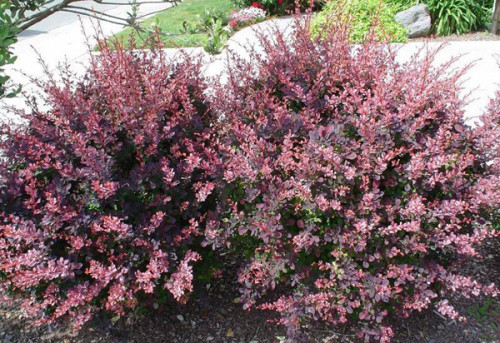
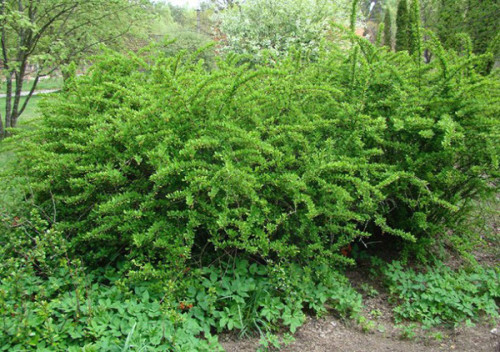
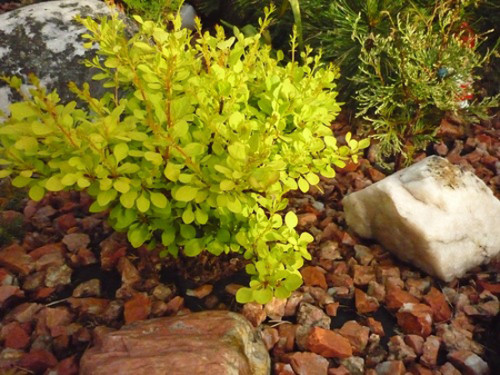
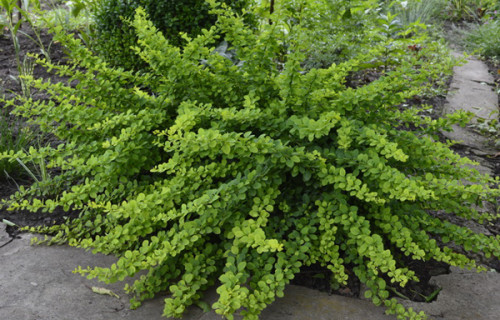
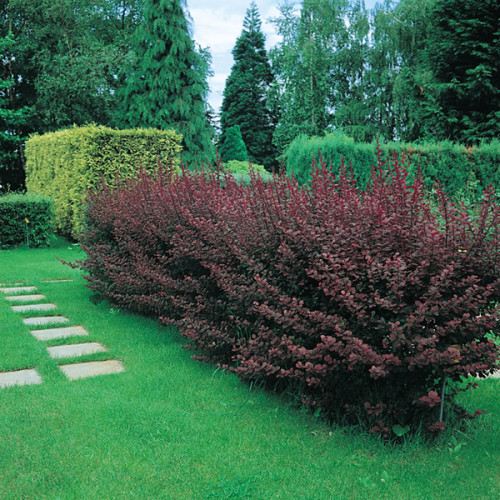
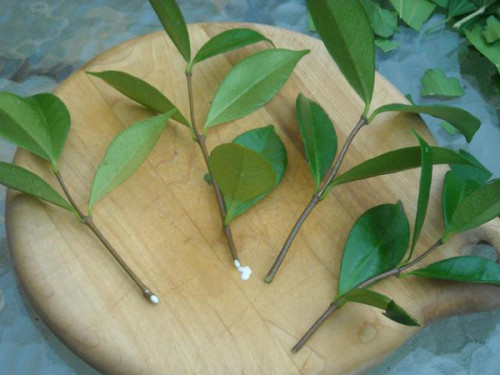
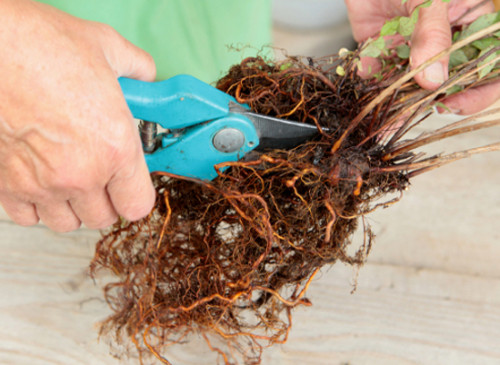
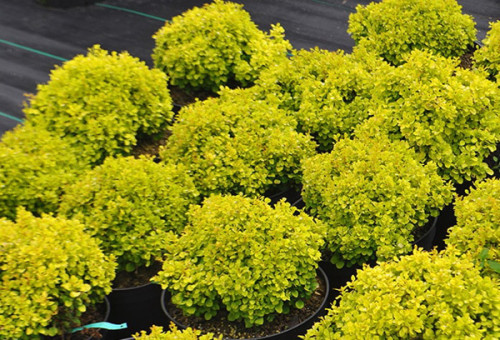
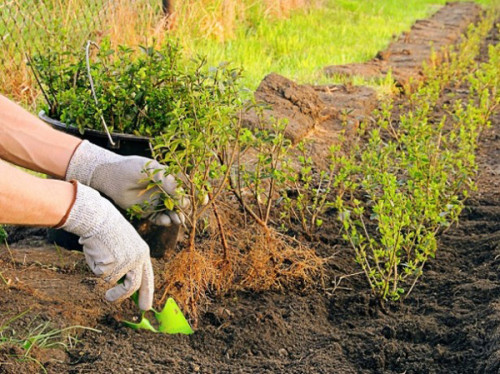
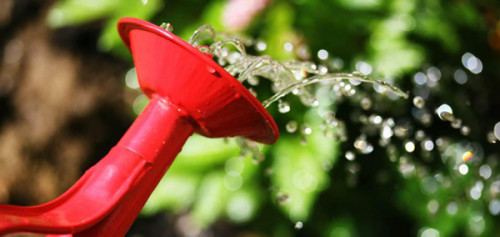

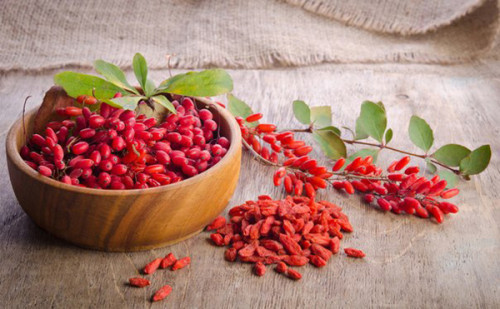
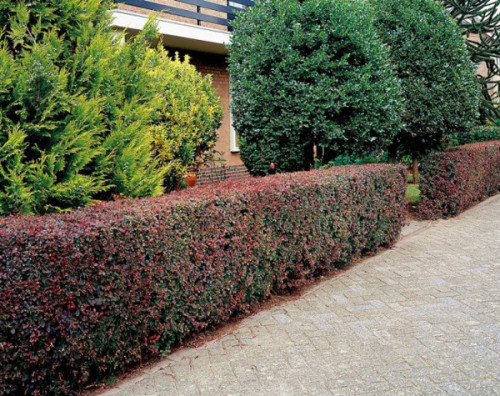
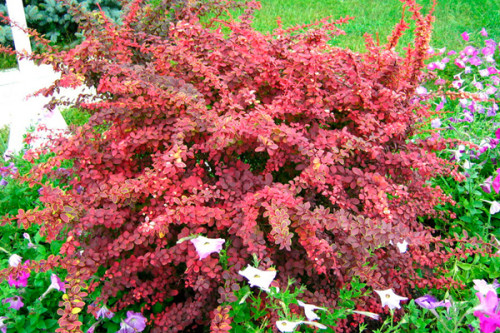
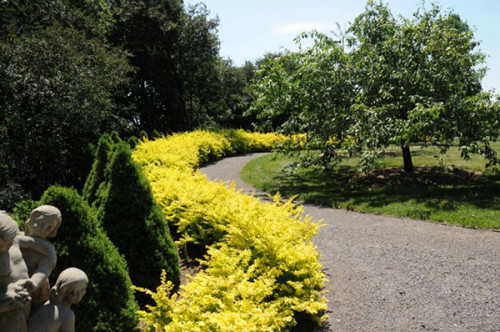












 Start a discussion ...
Start a discussion ...